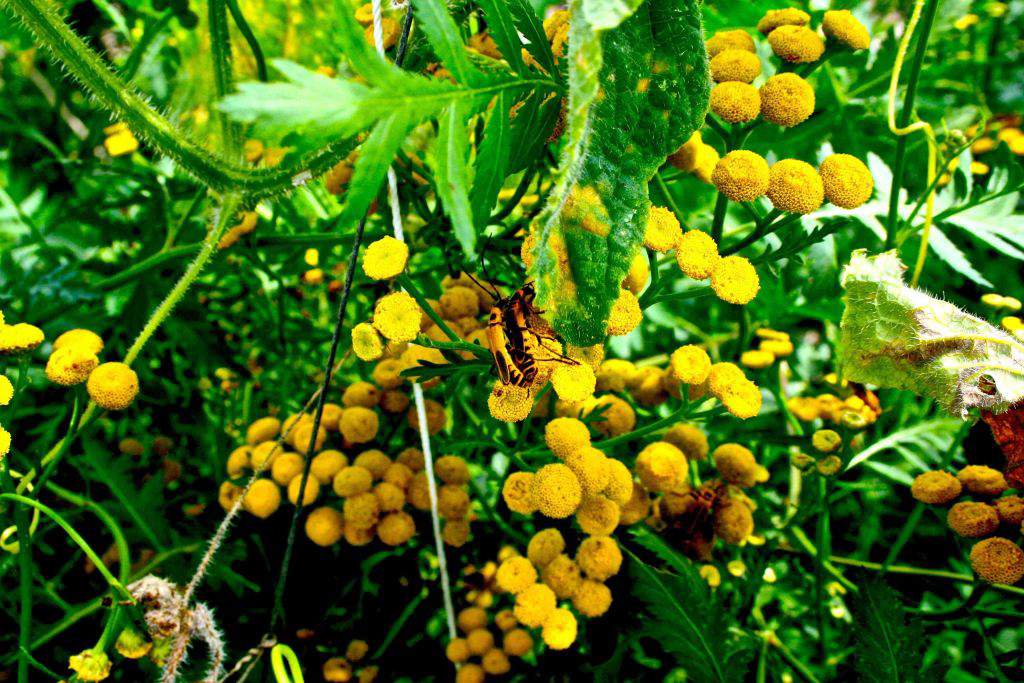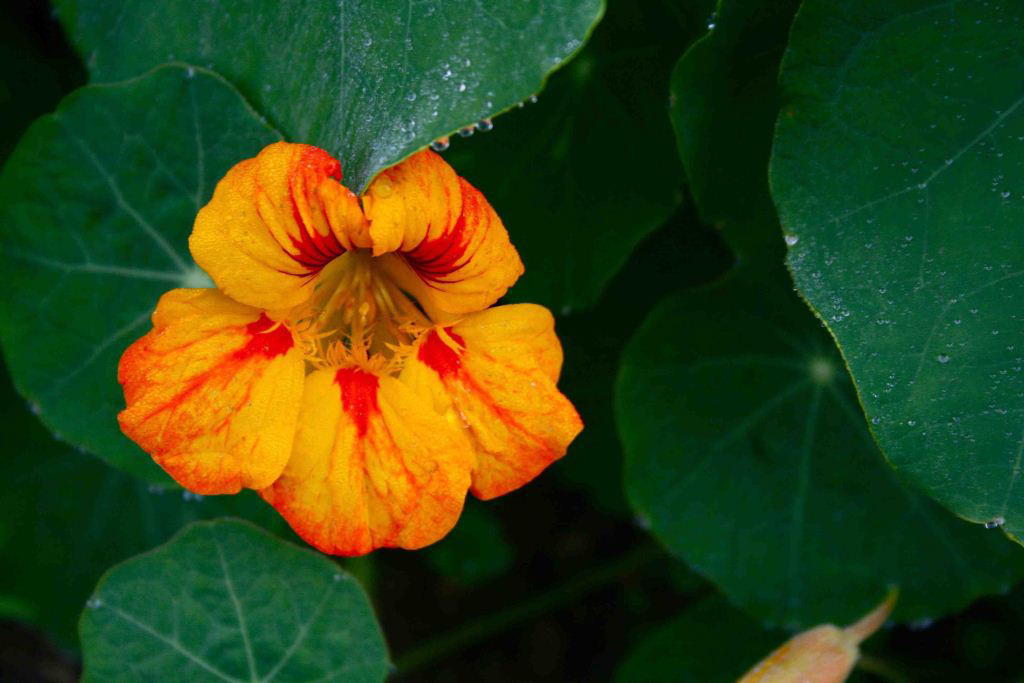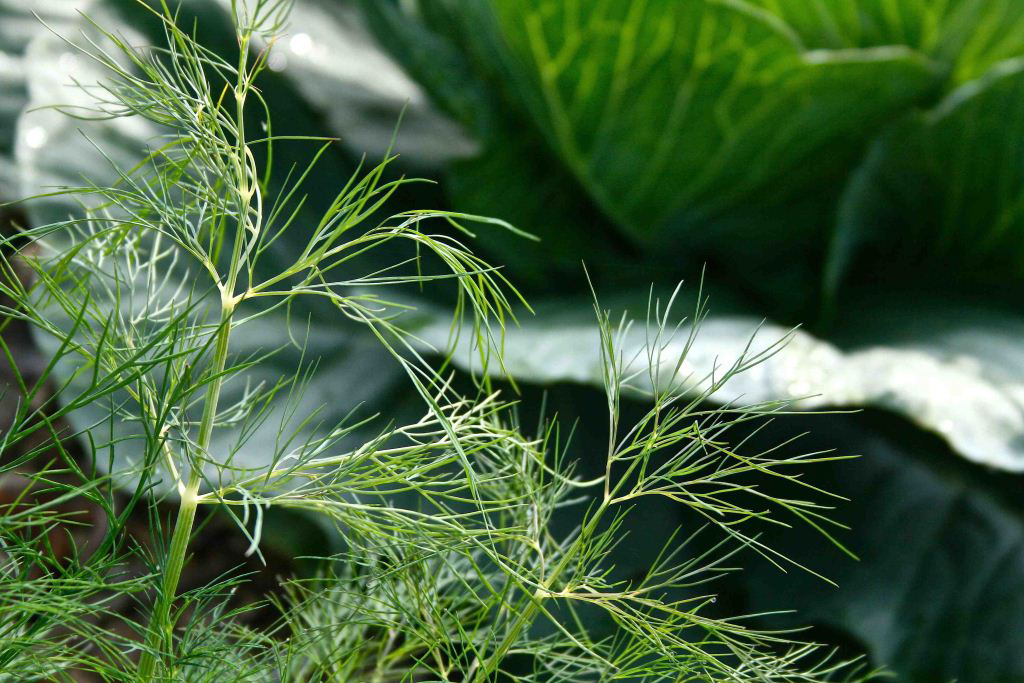Best Friends Forever
by Laura Schumm, Community Kitchen Garden Research Intern, Lewis Ginter Botanical Garden; photos by Brian Vick, Community Kitchen Garden Coordinator

Tansy has bright yellow flowers and attracts beneficial insects like the soldier beetles seen here. Soldier beetles are predators and the love to feed on soft-bodied insects like aphids and caterpillars
Plants have relationships in the same way that people have relationships. Like humans, some plants get along and some don’t. Companion planting is a practice that takes advantage of the beneficial relationships between certain plants to deter pests, attract beneficial insects, improve taste or growth of fruits/vegetables, etc. Companion planting is an important aspect of integrated pest management, which we are developing here in the Lewis Ginter Community Kitchen Garden to avoid using chemical pesticides. Implementing companion planting practices also encourages biodiversity and a balanced ecosystem.
The Native Americans understood the beneficial relationships between crops; they devised the system of interplanting squash, beans, and corn known as the Three Sisters.

Nasturtiums repel cucumbers beetles that transmit diseases like bacterial wilt and mosaic virus. These pretty blossoms are also edible! (the flavor is peppery like arugula).
In this situation the corn acts as a pole for the beans to climb and the beans help to stabilize the corn stalks. The beans also fix nitrogen on their roots; this helps to add nutrients back to the soil for next year. The squash grows low to the ground and works like a natural mulch by retarding weed growth and preventing water evaporation from the soil. These three crops not only grow together in harmony, they help each other to grow better and stronger like good friends should. Here in the Community Kitchen Garden we focus less on partnering vegetable types, and more on partnering herbs and other scented perennials with vegetables.
Certain flowering plants such as tansy and salvia work great as companion plants because they attract beneficial insects like honey bees and repel pests like squash bugs, cabbage moths, and cucumber beetles. Be careful with tansy though, it is very toxic to animals and can be invasive. Flowers like nasturtiums are said to attract predatory insects and repel cucumber beetles, aphids, and white flies.
Aromatic herbs such as rosemary, dill, and thyme work well as companion plants. Dill is said to improve the growth of cabbage and be a good companion to lettuce also. This herb can cross pollinate with carrots, so keep those two separated.
Companion planting is not an exact science, and the results of your companion planting efforts can be hard to measure. Environmental factors can also have a huge impact on insect populations. In other words, if the winter is really mild like it was this past winter, there is going to be a lot of insect activity no matter how many aromatic herbs you use in your garden plan. Every season will be a little bit different from the last. Companion planting is not a sure-fire way to eliminate pest problems in your garden and you probably won’t grow 10-pound cabbages just because you planted dill also, but why not try to let the beneficial relationships between plants help lighten your work load.
Here are some great companion planting resources:
Companion Planting
Brigham Young University – Idaho Companion Planting Guide
